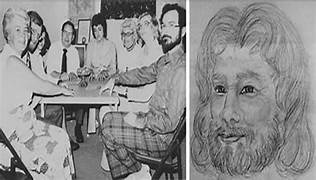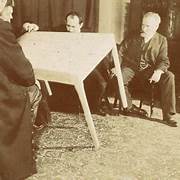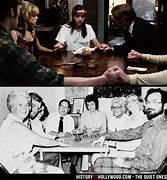The Philip Experiment (1972): When Human Imagination Created a Ghost
Introduction
In the early 1970s, a small team of Canadian researchers attempted something extraordinary — to create a ghost using only the power of imagination. Instead of asking how to summon a ghost, they asked: Can we invent one?
What followed became one of the most intriguing and controversial studies in parapsychology — The Philip Experiment (1972). This experiment blurred the line between science and the supernatural, reason and belief. It raised questions not only about ghosts but also about the untapped powers of the human mind.
Origins of the Experiment
The project was designed by Dr. A.R.G. Owen, a mathematician and geneticist, and Dr. Iris Owen, a psychiatric nurse, as part of the Toronto Society for Psychical Research (TSPR).
At the time, séances and ghost hunting were common, but the Owens wanted a scientific approach. They weren’t trying to contact an existing spirit — they wanted to explore the psychology of belief and whether a collective could generate ghost indicators or signs of a haunting, without any actual ghost.
Creating Philip: The Imaginary Ghost
The group invented a fictional spirit named Philip Aylesford, an English nobleman from the 17th century. His story was rich in drama — a loveless marriage, a forbidden affair with a Gypsy named Margo, false accusations of witchcraft, and eventually, suicide from guilt.
The researchers even drew a portrait, described his manor “Deddington Hall,” and discussed his habits, beliefs, and emotions. Philip became a psychological construct — detailed enough to be almost real, yet completely without head ghost or historical basis. He existed only as a ghost message in their minds.
Silence Before the Stir
The team of eight participants — including a sociologist, housewives, and professionals — began meeting regularly in a well-lit room with no spooky atmosphere.
For months, nothing happened. They spoke about Philip, visualized him, even tried to feel his presence. No ghost audio, no movement, just silence and scepticism.
Philip Comes Alive
Then, something changed. During one session, the table began to vibrate and tap. The group established a simple communication code — one tap for “yes,” two for “no.”
The table responded as though Philip were present. It even moved without human touch, tilted on one leg, and occasionally chased participants. The group felt cold winds and saw lights flicker. Each ghost indicator reinforced their growing belief that they had somehow brought Philip to life.
Sometimes, Philip gave answers that weren’t part of his fictional biography, as though he was evolving — a consciousness expanding beyond its creators. This phenomenon fascinated both believers and sceptics.
What Was Really Happening?
The Owens never claimed that Philip was a real ghost. Instead, they theorized the phenomenon was psychokinesis (PK) — the group’s collective subconscious energy influencing physical matter.
It suggested that belief itself could cause physical effects, much like a shared illusion. To them, the Philip Experiment revealed that when people truly believe, they can make the unreal feel real — a ghost server built from shared imagination.
Further Experiments
Encouraged by these results, other TSPR teams created fictional ghosts of their own: Lilith, Sebastian, and Axel. Each new test produced similar outcomes — unexplained knocks, table movements, and ghost messages consistent with their invented backstories.
The results hinted that the Philip phenomenon could be replicated, though mainstream scientists dismissed it as suggestion and expectation rather than proof of the paranormal.
Cultural Impact
Even though many sceptics doubted the findings, The Philip Experiment became a cultural sensation. Documentaries, talk shows, and books explored the case, asking:
Do you believe in ghosts, or do we create them?
Whether it was a collective hallucination or proof of mind-over-matter, Philip fascinated people worldwide. He became a small ghost in scientific history — a reminder that the boundary between imagination and reality is sometimes paper-thin.
Legacy and Meaning
Over fifty years later, the Philip Experiment (1972) still sparks debates among psychologists, philosophers, and paranormal investigators. Some see it as evidence of psychokinesis, while others interpret it as a striking example of group psychology and suggestion.
Its real legacy lies in its central question:
If ghosts aren’t “out there,” could they exist within us — shaped by collective belief and emotion?
In a world powered by belief systems, social media trends, and shared realities, the Philip Experiment feels more relevant than ever. It reminds us how the force of belief can make illusions appear tangible, transforming thought into perceived reality.
Conclusion
The Philip Experiment was never just about ghosts — it was about us. It showed how imagination, unity, and expectation can create phenomena that feel profoundly real.
Whether Philip was a ghost message, a ghost audio illusion, or a reflection of human psychology, he symbolized the mysterious power of shared thought.
In attempting to create a ghost, the researchers uncovered something deeper — the unseen machinery of belief itself.
Disclaimer:
This blog discusses The Philip Experiment (1972) purely from historical, psychological, and research perspectives. It does not promote or condone any occult, séance, or supernatural practice. Readers are encouraged to interpret this case as a study in human belief, imagination, and cultural psychology — not as a guide on how to summon a ghost.



